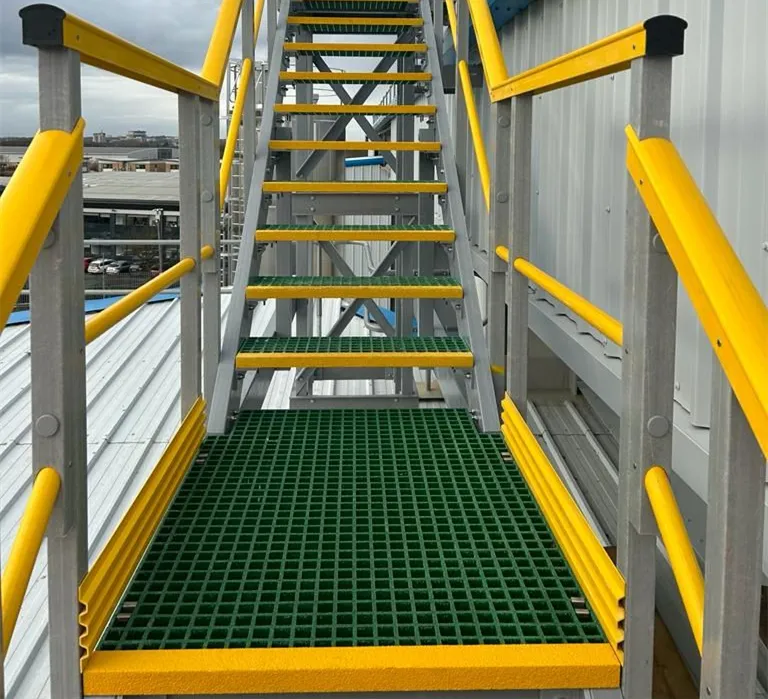loading...
- No. 9, Xingyuan South Street, Dongwaihuan Road, Zaoqiang County, Hengshui, Hebei, China
- admin@zjcomposites.com
- +86 15097380338
- Welcome to visit our website!
frp treads
Understanding FRP Treads The Future of Safe and Durable Flooring Solutions
In today's world, the demand for durable and safe flooring solutions has increased significantly, especially in industrial and commercial settings. One product that has gained traction in recent years is Fiber-Reinforced Polymer (FRP) treads. These innovative treads are transforming the way we think about flooring, particularly in environments that require resilience against harsh conditions and heavy usage.
What are FRP Treads?
FRP (Fiber-Reinforced Polymer) treads are composite materials made from a polymer matrix reinforced with fibers, typically glass or carbon. This combination results in an exceptionally strong and lightweight construction that can withstand significant wear and tear. The design of these treads incorporates anti-slip surfaces and a variety of colors, enhancing both functionality and aesthetics.
Benefits of FRP Treads
1. Durability FRP treads are resistant to chemical corrosion, moisture, and extreme temperatures. This makes them an ideal choice for applications in wet environments, such as food processing plants and chemical facilities, where traditional materials may fail.
2. Safety One of the most significant advantages of FRP treads is their excellent slip resistance. The surfaces can be designed with various textures to enhance traction, reducing the risk of slips and falls in high-traffic areas. This is crucial in industrial settings where safety regulations are stringent.
3. Lightweight Compared to traditional metal or concrete treads, FRP treads are significantly lighter. This characteristic simplifies installation and can reduce transportation costs. Lightweight materials can also lessen the structural load on existing infrastructures, making it easier to integrate treads into older buildings.
frp treads

4. Customizability FRP treads can be manufactured to meet specific customer requirements, including color, size, and patterns. This customization allows businesses to maintain branding while ensuring that the flooring solution fits seamlessly within their operational framework.
5. Low Maintenance The non-porous nature of FRP means that these treads are easy to clean and require minimal maintenance over time. They do not stain easily and resist microbial growth, making them a hygienic option for various applications.
Applications of FRP Treads
FRP treads are versatile and suitable for numerous applications. In industrial settings, they are increasingly used in manufacturing plants, warehouses, and shipping docks, where heavy machinery and foot traffic are prevalent. Moreover, FRP treads can be found in commercial spaces such as retail stores, restaurants, and hospitals, where aesthetics, safety, and hygiene are paramount.
Recreational areas, including playgrounds and sports facilities, also benefit from the installation of FRP treads. Their ability to withstand outdoor conditions while providing a safe surface for activities makes them an attractive option for parks and community centers.
Conclusion
In conclusion, FRP treads represent a significant advancement in flooring solutions, offering a blend of durability, safety, and aesthetic appeal. As industries increasingly prioritize worker safety and operational efficiency, FRP treads are likely to become a standard choice. Their unique properties make them suitable for a wide array of applications, providing a robust solution for the challenges faced in modern environments. With continued innovation and adoption, FRP treads will likely shape the future of flooring in both industrial and commercial spaces. Whether you are upgrading your facility or completing a new build, considering FRP treads could be a decision that enhances safety, durability, and overall value.
-
GRP Structures: The Future of Lightweight, High-Performance EngineeringNewsJun.20,2025
-
FRP Water Tank: High-Performance Storage for Corrosive and Clean Water SystemsNewsJun.20,2025
-
FRP Square Tube: The New Industry Standard for Chemical and Structural ApplicationsNewsJun.20,2025
-
FRP Pultruded Profiles: The Ultimate Choice for Lightweight Structural StrengthNewsJun.20,2025
-
FRP Handrails: The Safer, Smarter, and Stronger Choice for Modern InfrastructureNewsJun.20,2025
-
FRP Grating: The Smart Solution for Durable, Lightweight Industrial FlooringNewsJun.20,2025
-
Why Choose a Galvanized Water Tank for Your Storage NeedsNewsMay.21,2025
